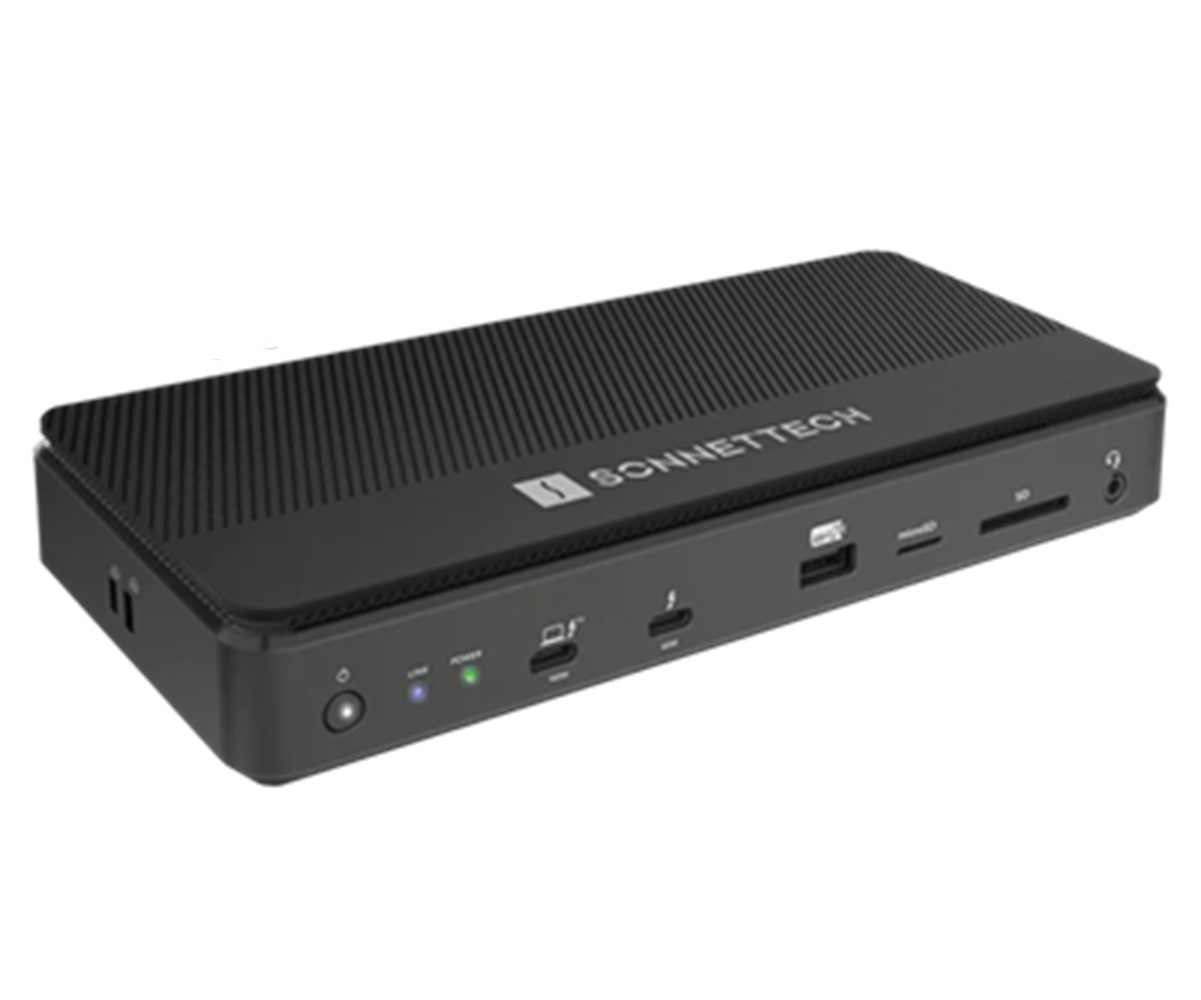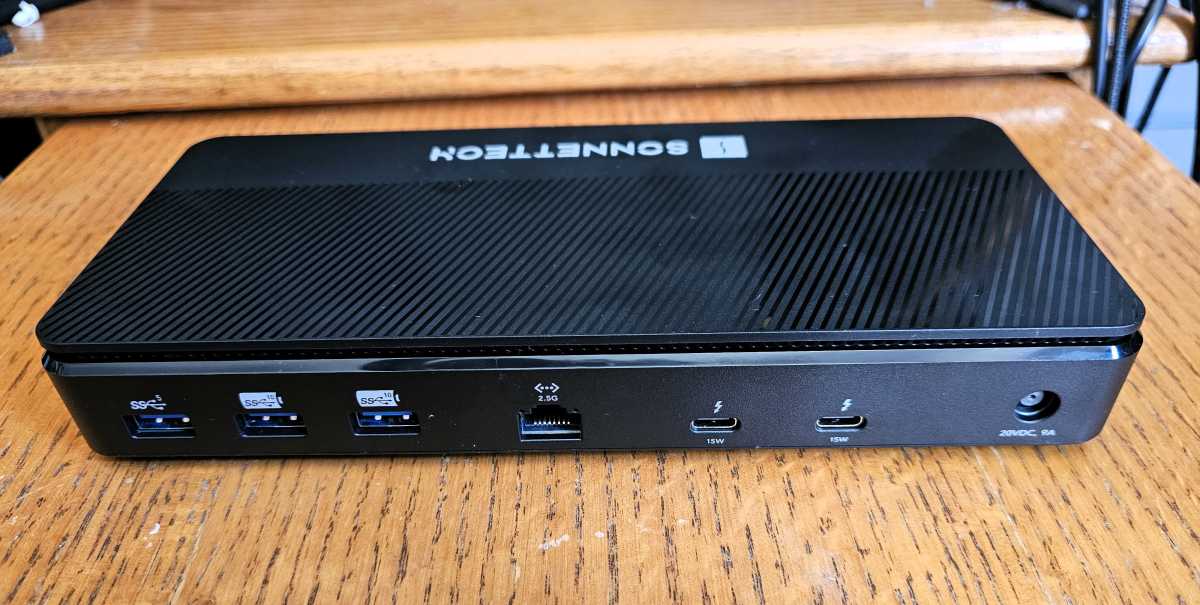I’ve worked with many, many Thunderbolt docking stations and USB-C hubs over the past few years, and only one innovation has really felt transformative: the integration of an SSD directly into the dock itself.
Sonnet’s latest Thunderbolt 5 docking station includes an option to store from between 1 to 4 terabytes of data via an integrated PCIe 4.0 NVMe SSD inside the dock itself. Before I reviewed it, I dismissed the SSD entirely; I was more interested in Thunderbolt 5’s capabilities, namely the additional throughput and charging capabilities.
I couldn’t have been more wrong. The integrated SSD is like the DVR of docking stations: you either live in a world where you can pause live TV, or one where you can’t. And it makes all the difference.
I know what you’re thinking. Me, I have a few SSDs around my office, and it’s likely you own one or two as well. You might have a hard drive, or a USB key or two. What makes an integrated SSD inside a docking station any better?
How to Make Your Laptop SIng
Sonnet Echo 13 Thunderbolt 5 SSD Dock

To begin with, stunningly great performance. When testing out the integrated PCIe 4.0 NVMe SSD inside Sonnet’s dock, it compared extremely favorably to our external gaming SSDs, and a bit slower than an internal SSD. Gamers can set up the integrated SSD as a Steam library to store and run games, but you’ll see benefits during the workday, as well: that speed can shave entire minutes off moving or copying large video files. Just make sure you pair the dock to a Thunderbolt 5 laptop to enjoy the best performance.
Organization matters, too. Most of my life spent at my desk is testing, writing, inserting and removing hardware. My desk is a stone-cold mess, with cables snaking everywhere in and around monitor cords. I wrote about how I bit the bullet and future-proofed my desktop with $27 worth of Ethernet cables, but the truth is I’d rather some company develop some massively high-speed, low-latency wireless protocol so I could clean up my desk once and for all.
Adding an external cabled SSD simply adds another cable and device to the clutter. Hiding that SSD inside the dock adds a measure of calm to my workspace. It’s a cleaner, neater look.

Mark Hachman / Foundry
I do have a bit of a unique case in that I often swap out notebooks, so my ability to quickly transfer files between devices — like Thunderbolt Share or the Logitech Flow software — matters. A multi-terabyte SSD is one heck of a “sneakernet” technology in case I start working on another laptop.
To be fair, all this would be a more compelling argument a year ago. Sonnet has jumped their prices, presumably due to tariffs; the Sonnet dock with a 1TB integrated SSD costs $439, about $40 more than when I reviewed it, and a 2TB option is $550. That’s a ton of money to spend for a dock, especially when even inexpensive Thunderbolt 3 docks are still (barely) viable because of the lack of Thunderbolt 5 hardware. It’s an easier pill to swallow if you think that you’re simply buying a dock and a high-speed SSD, bundled together.
Not every docking station needs to include integrated storage, especially for those seeking to save a few bucks. For a premium device, though, an integrated SSD sells itself. It deserves to be a premium feature on tomorrow’s top-of-the-line docking stations.
Autentifică-te pentru a adăuga comentarii
Alte posturi din acest grup

Intel documentation has revealed additional code names in the context

In the last few days, AI-generated text-to-video has taken off, with

At this point, I get so many spam calls that my blood pressure rises

One of the stranger effects of the Trump administration’s trade war w

A bit of extra storage space is never a bad thing to have, especially

Looking to skip the hassle of wall-mounting a security camera in your


